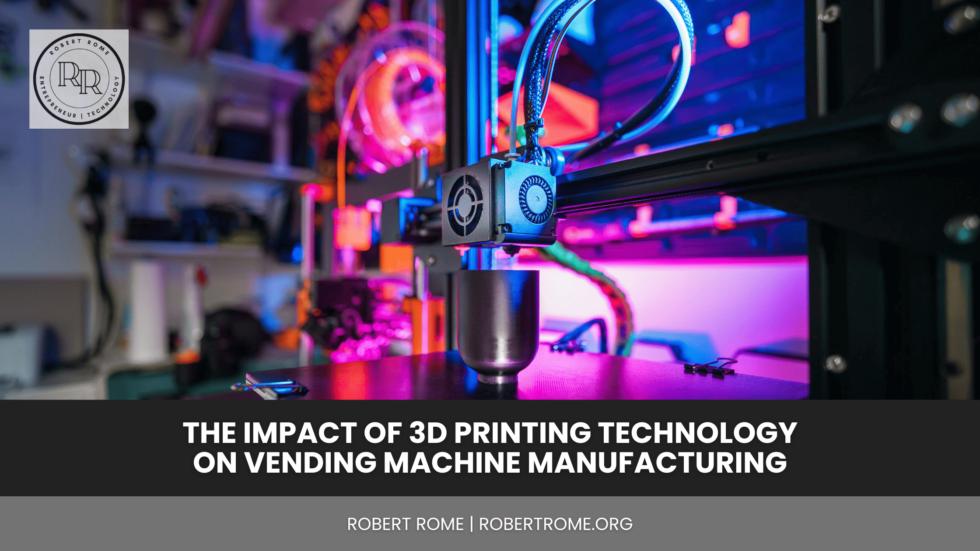

The Impact of 3D Printing Technology on Vending Machine Manufacturing
by Robert Rome | Feb 21, 2024 | Robert Rome, Technology
3D printing technology has revolutionized manufacturing processes across various industries, and the vending machine industry is no exception. In this article, we’ll explore the impact of 3D printing technology on vending machine manufacturing, including its bene�ts, challenges, and future potential.
Bene�ts of 3D Printing
One of the main features of 3D printing technology is its ability to create complex, customized parts with minimal waste. Traditional manufacturing methods often require expensive molds or tooling for each new design, whereas 3D printing allows for rapid prototyping and on-demand production of custom components.
In addition, 3D printing allows manufacturers to produce parts with lightweight structures and complex geometries that would be otherwise di�cult or even impossible to achieve using traditional methods. This �exibility in design o�ers new opportunities
vending machines.
Challenges and Considerations
While 3D printing o�ers numerous bene�ts, it also presents certain challenges and considerations for vending machine manufacturers. For example, the upfront cost of 3D printing equipment and materials can be prohibitive for smaller manufacturers, limiting adoption to larger companies with greater resources.
Furthermore, 3D printing processes can be slower and less e�cient than traditional manufacturing methods for large-scale production runs. As a result, manufacturers must carefully weigh the trade-o�s between cost, speed, and quality when deciding whether to incorporate 3D printing into their production processes.
Future Potential
Despite these challenges, the future potential of 3D printing technology in vending machine manufacturing is promising. As the technology continues to grow and become more a�ordable, we expect to see greater adoption of 3D printing across the industry. In particular, 3D printing holds the potential to revolutionize the supply chain for vending machine parts and components. 3D printing can help streamline operations, reduce costs, and improve e�ciency by enabling on-demand production of spare parts and reducing inventory.
Additionally, 3D printing technology opens up new opportunities for customization and personalization in vending machine design. From custom branding and signage to tailored product dispensing mechanisms, 3D printing allows manufacturers to create unique vending solutions that meet the speci�c needs and preferences of their customers.
In conclusion, 3D printing technology signi�cantly impacts vending machine manufacturing, o�ering bene�ts such as increased design �exibility, cost savings, and supply chain optimization. While challenges remain, the future potential of 3D printing in the vending industry is bright, promising greater innovation and e�ciency in the years to come.
Search
RECENT POSTS
The Impact of 3D Printing Technology on Vending Machine Manufacturing
Vending Machine Software Updates: Staying Current with Technological Advances
Blockchain and Supply Chain Transparency in Vending Machine Inventory
Cloud-Based Vending Machine Management: Remote Monitoring and Control
Cashless Payments in Vending Machines: Exploring Mobile Wallets and Contactless Solutions
Links
Robert Rome Entrepreneurship
Robert Rome Issuu
Robert Rome LinkedIn
Robert Rome Professional Overview
Robert Rome Vimeo
Robert Rome Vocal Media
Robert Rome WellFound
